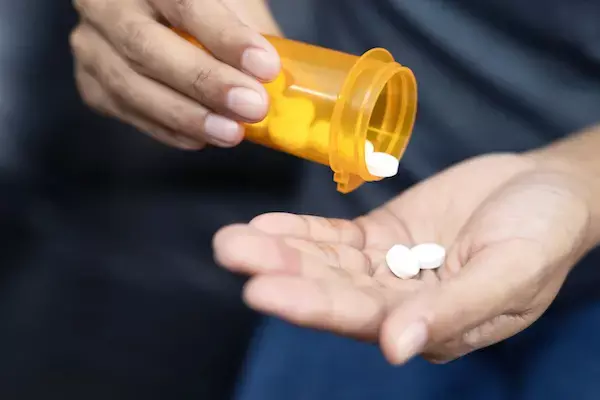- Home
- Medical news & Guidelines
- Anesthesiology
- Cardiology and CTVS
- Critical Care
- Dentistry
- Dermatology
- Diabetes and Endocrinology
- ENT
- Gastroenterology
- Medicine
- Nephrology
- Neurology
- Obstretics-Gynaecology
- Oncology
- Ophthalmology
- Orthopaedics
- Pediatrics-Neonatology
- Psychiatry
- Pulmonology
- Radiology
- Surgery
- Urology
- Laboratory Medicine
- Diet
- Nursing
- Paramedical
- Physiotherapy
- Health news
- Fact Check
- Bone Health Fact Check
- Brain Health Fact Check
- Cancer Related Fact Check
- Child Care Fact Check
- Dental and oral health fact check
- Diabetes and metabolic health fact check
- Diet and Nutrition Fact Check
- Eye and ENT Care Fact Check
- Fitness fact check
- Gut health fact check
- Heart health fact check
- Kidney health fact check
- Medical education fact check
- Men's health fact check
- Respiratory fact check
- Skin and hair care fact check
- Vaccine and Immunization fact check
- Women's health fact check
- AYUSH
- State News
- Andaman and Nicobar Islands
- Andhra Pradesh
- Arunachal Pradesh
- Assam
- Bihar
- Chandigarh
- Chattisgarh
- Dadra and Nagar Haveli
- Daman and Diu
- Delhi
- Goa
- Gujarat
- Haryana
- Himachal Pradesh
- Jammu & Kashmir
- Jharkhand
- Karnataka
- Kerala
- Ladakh
- Lakshadweep
- Madhya Pradesh
- Maharashtra
- Manipur
- Meghalaya
- Mizoram
- Nagaland
- Odisha
- Puducherry
- Punjab
- Rajasthan
- Sikkim
- Tamil Nadu
- Telangana
- Tripura
- Uttar Pradesh
- Uttrakhand
- West Bengal
- Medical Education
- Industry
Low-Dose Oral Minoxidil Effective as Higher Dose in Hair Regrowth: Study

A new clinical trial published in the Journal of the American Academy of Dermatology found that a lower dose of oral minoxidil (2.5 mg daily) produced hair regrowth comparable to the standard 5 mg dose in men with androgenetic alopecia (AGA), while resulting in fewer adverse effects.
The trial from Brazil enrolled 100 men aged 25 to 55 years (average age 39.5) with moderate to severe AGA, classified as Norwood-Hamilton stage 3V to 5V. After 24 weeks, 92 participants completed the study, split evenly between the 2.5 mg and 5 mg daily groups.
At baseline, the 2 groups showed similar hair profiles where the 2.5 mg group started with a mean non-vellus (thicker, terminal) hair density of 144.7 hairs per square centimeter, and the 5 mg group had 146.1 hairs per square centimeter. Total hair density (both terminal and finer hairs) was slightly higher in the lower-dose group at 214.7 hairs/cm² when compared to 194.4 hairs/cm² in the higher-dose group.
The primary goal was to measure changes in non-vellus hair density at the vertex, the crown area often most affected by male pattern baldness. Secondary measures included total hair density, dermatologist-assessed global photographs, self-reported improvement, and the frequency of side effects.
At the 24-week mark, non-vellus hair density increased in both, with no statistically significant difference: the mean difference between the two doses was just 0.9 hairs/cm² (P = .403). Total hair density changes also mirrored each other closely, with only a slight, non-significant advantage in the higher dose group (mean difference, 3.6 hairs/cm²; P = .078).
Independent dermatologists who assessed the clinical photographs rated improvement in 64% of men on 2.5 mg and 62% on 5 mg, again showing no meaningful gap (P = .386). However, men themselves perceived more benefit at the higher dose where 92% of participants taking 5 mg reported improvement when compared to 84% in the 2.5 mg group (P = .009).
Adverse effects like pedal edema and dizziness were significantly more common in the 5 mg group (P = .024). Also, no substantial differences were observed in blood pressure or heart rate between the groups, addressing concerns about systemic cardiovascular risks associated with oral minoxidil.
Source:
Fonseca, L. P. C., Miot, H. A., Chaves, C. R. P., & Ramos, P. M. (2025). Oral minoxidil 2.5mg vs 5mg for male androgenetic alopecia: A double-blind randomized clinical trial. Journal of the American Academy of Dermatology. https://doi.org/10.1016/j.jaad.2025.09.031
Neuroscience Masters graduate
Jacinthlyn Sylvia, a Neuroscience Master's graduate from Chennai has worked extensively in deciphering the neurobiology of cognition and motor control in aging. She also has spread-out exposure to Neurosurgery from her Bachelor’s. She is currently involved in active Neuro-Oncology research. She is an upcoming neuroscientist with a fiery passion for writing. Her news cover at Medical Dialogues feature recent discoveries and updates from the healthcare and biomedical research fields. She can be reached at editorial@medicaldialogues.in
Dr Kamal Kant Kohli-MBBS, DTCD- a chest specialist with more than 30 years of practice and a flair for writing clinical articles, Dr Kamal Kant Kohli joined Medical Dialogues as a Chief Editor of Medical News. Besides writing articles, as an editor, he proofreads and verifies all the medical content published on Medical Dialogues including those coming from journals, studies,medical conferences,guidelines etc. Email: drkohli@medicaldialogues.in. Contact no. 011-43720751


